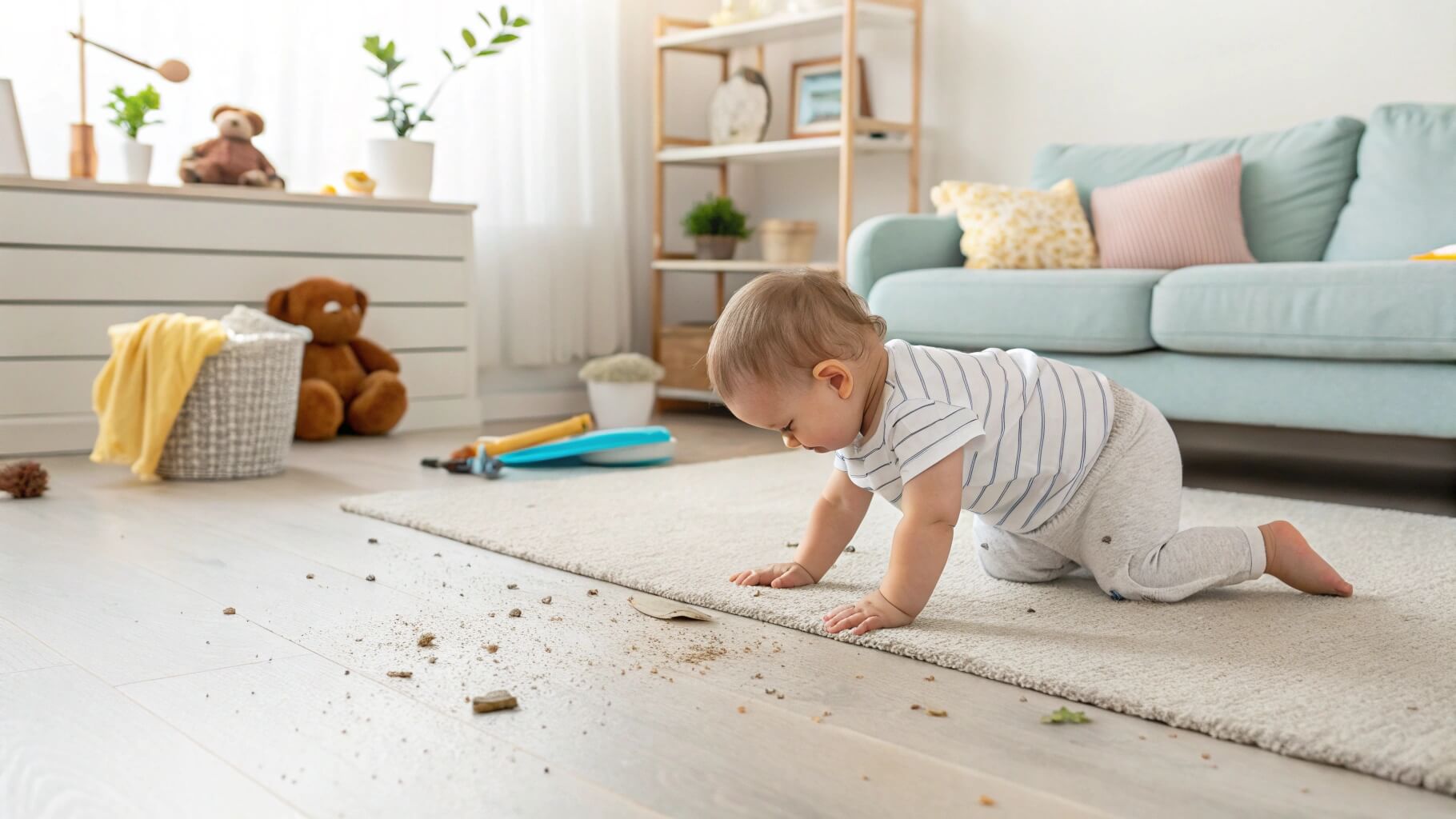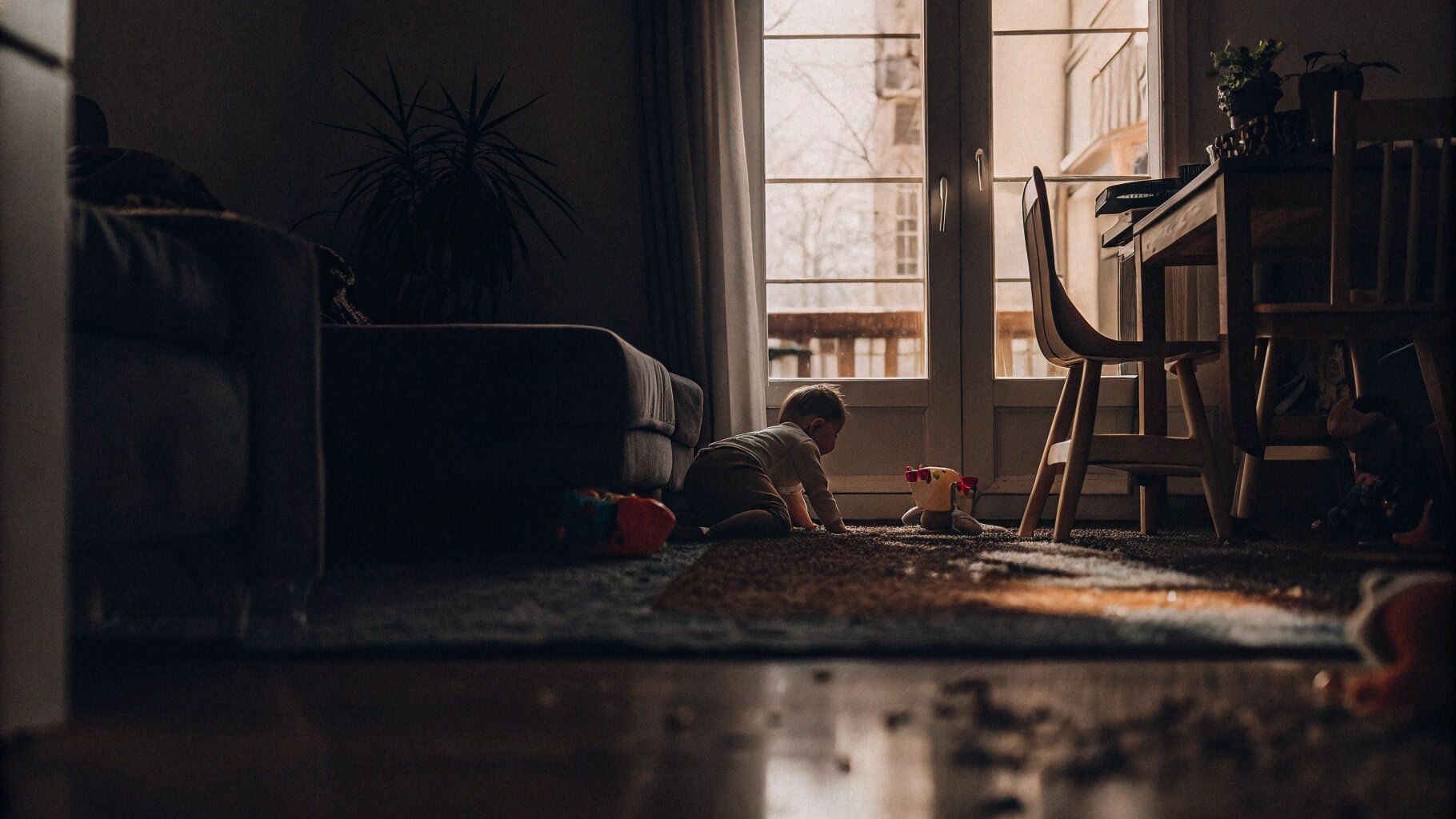What's the Secret to a Spotless Floor When You Have a Crawling Baby?
Nate Holland · Jun 16, 2025 · 8 min read

Imagine this: you just finished perfectly mopping the kitchen floor, and within minutes your little adventurer has crawled across it, leaving tiny handprints, and somehow located the one crumb you thought you had cleaned up. Sounds familiar? If you have a crawling baby and are an Australian parent, you have most likely found that maintaining perfect flooring is your toughest household chore.
Actually, your attitude to floor cleanliness changes drastically once your bub starts to crawl. All surfaces suddenly transform into potential dining tables, playgrounds, and nap areas simultaneously. The good news is that it is still possible to maintain clean floors regularly, even with a crawling baby. It only calls for a change in approach, a strategy, and, maybe most importantly, reasonable expectations.
Knowing Why Right Now Clean Floors Matter More
When your baby begins to crawl, the importance of floor cleanliness increases significantly. Every surface is constantly in touch with those small hands and knees, which gather whatever lurks there. Dirt, sand, and allergens can readily enter Australia, where we enjoy our outdoor way of life, posing extra difficulties for parents trying to keep a safe crawling environment.
These days, clean flooring goes beyond appearances. They centre on health, safety, and letting your child explore free from continual concern. A well-kept floor lowers the risk of infections, keeps your baby from swallowing dangerous particles, and makes the surroundings more pleasant for those unavoidable floor-based play sessions that seem to last for hours.
The Revolution in Daily Floor Maintenance
Perfect flooring with a crawling baby depends on totally overhauling your cleaning schedule. Gone are the years of weekly deep cleans. Rather, welcome the ability to do a little and often. Instead of depending on marathon cleaning sessions, this method means including fast, effective cleaning habits all through your day.
Every morning, quickly sweep or vacuum the main areas of crawling access. This quick cleaning is sufficient to remove overnight accumulations of dust, pet hair, or any trash that may have appeared, but it is not thorough. Keep a cordless stick vacuum or handheld vacuum right at hand. Please address any items you notice on the floor immediately, rather than postponing it for later.
Consider implementing the "five-minute pickup" policy. When you move from room to room, take a moment to scan the floor for anything out of place. This habit helps you to avoid mess accumulation and greatly simplifies your evening cleaning schedule.
Selecting Your Cleaning Arsenal Strategically
Not all cleaning products and tools are equal, especially when it comes to surfaces your baby will inevitably lick, touch, and possibly sleep on. The secret is choosing safe, efficient products for small children.
For daily cleaning, microfiber towels moistened with water often work best for tough surfaces. Without using strong chemicals, they are excellent at gathering dust, hair, and small trash. When you do need something stronger, search for cleaning products especially meant to be baby-safe, or better still, make your own using basic ingredients like white vinegar and water.
Regarding vacuum cleaning, choose a model with high suction and excellent filtration. HEPA filters are particularly helpful because they capture smaller particles that could otherwise be dispersed back into the atmosphere. Consider the types of debris that Australian homes are likely to encounter. General outdoor dust, grass clippings from backyard play, and sand from beach visits call for a vacuum able to handle different textures and particle sizes.
Strategic Time Management and Zone Control
The strategic timing of your cleaning activities can help distinguish between success and frustration. Cleaning areas right after your infant finishes playing in them is the most efficient way to start them on the next area path. This method guarantees that every space gets attention when it most needs it and helps to stop mess from spreading.
Within your house, set aside specific crawling areas. Knowing that your baby spends a lot of time in these areas, you concentrate most of your cleaning activities here. Focusing your efforts on these high-traffic areas will help you maintain higher cleaning standards without exhausting yourself by attempting to keep every square metre of your house completely clean.
Nap times start to become your secret weapon for more complete cleaning. You can take care of the areas that demand more attention while your child sleeps without worrying about them crawling onto recently cleaned or wet surfaces.
The Authority of Prospection

Often the best cleaning plan is to avoid mess entirely in the first place. This means being clever about how you run your surroundings rather than limiting the exploration of your child. Under high chairs and feeding stations, place mats to catch spills before they reach the ground floor. Keep shoes at the door to cut down on the outdoor dirt tracked across crawling paths.
Think about the timing of untidy pursuits. If you intend to offer your baby finger foods or participate in especially messy play, do it either right before bath time or during your already scheduled cleaning. This means you're not continuously fighting fresh messes all through the day.
Another significant difference is the regular maintenance of the areas surrounding crawling spaces. Maintaining cleanliness in pet areas, kitchen counters, and doorways helps to stop trash from finding its way into your baby's play area.
Control of Reasonable Expectations
The most crucial secret is that it's quite normal; perfect floors with a crawling baby are a myth. Maintaining showroom standards is not the aim; rather, it is to provide a safe, reasonably clean space where your baby might grow and explore.
Some days, even with your best efforts, the floors will be messy once more within minutes of cleaning. This is natural and has no bearing on your parenting or housekeeping skills. Emphasise keeping safety and basic cleanliness instead of striving for excellence.
Remember: this phase is transient. Your little crawler will be walking and then running before you know it, and the dynamics of maintaining a clean house will change once more. Accept this time for what it is: a special period in your family's life that calls for modified strategies but also offers immense delight and developmental benchmarks.
Building Ecological Systems
The most successful parents are those who design systems fit for their way of life instead of against it. This might mean designating particular times for more intensive cleaning while enlisting help from partners, family members, or professional childcare providers when needed, or it might mean cleaning little and often throughout the day.
Never underestimate the need for help. Support systems are absolutely essential for preserving both clean floors and your sanity, whether that means having a partner take care of baby chores while you handle the flooring or sometimes paying professional cleaners for deep cleaning visits.
Think also of the long-term advantages of early instruction in cleanliness practices. Your baby is learning even though they won't be actively helping with housework just yet. Establishing regular, peaceful cleaning schedules now lays the groundwork for later, useful behaviours.